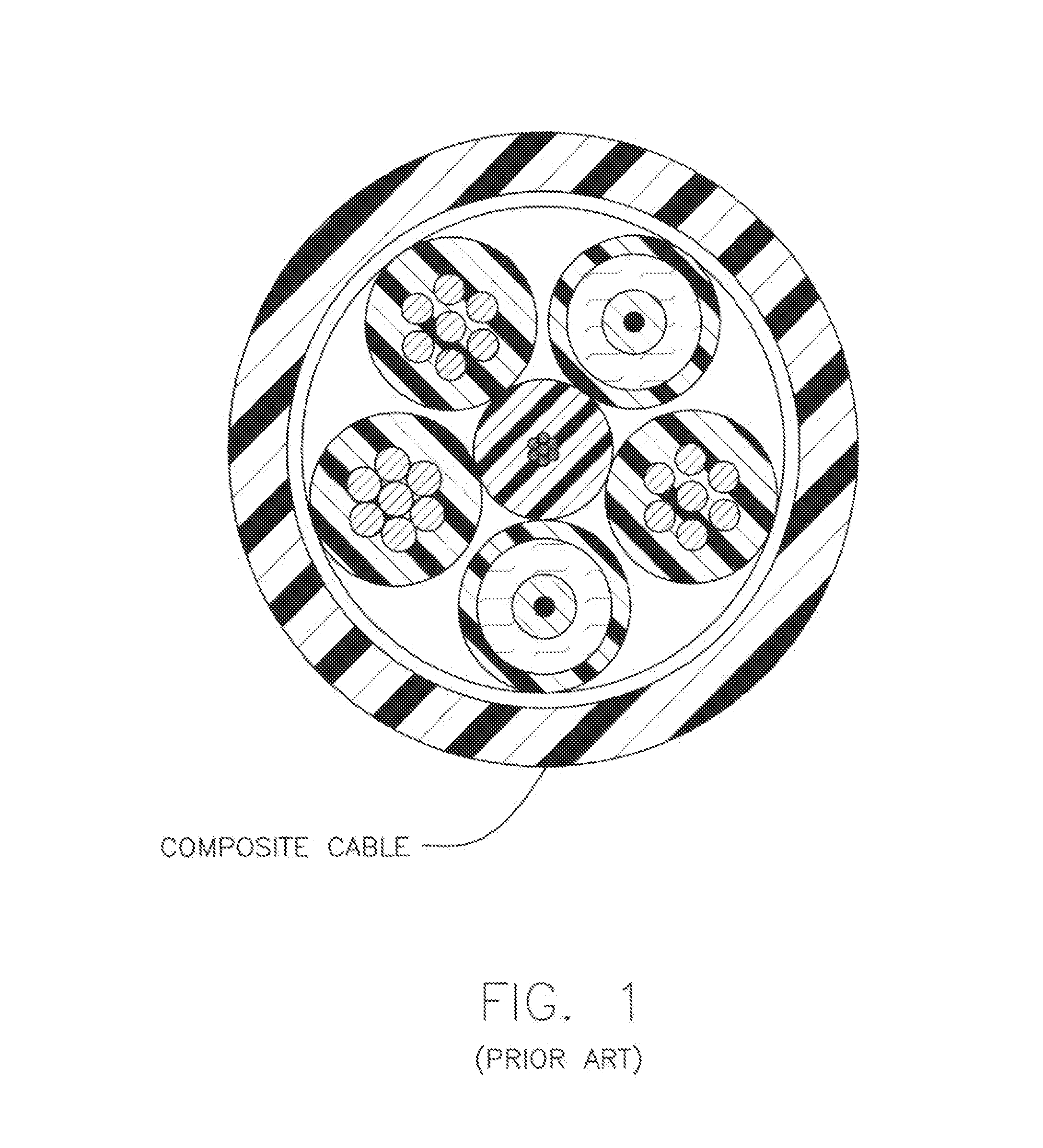Composite, optical fiber, power and signal tactical cable
a technology of optical fiber and tactical cable, applied in the field of composite fiber optic, power and signal type cables, can solve the problems of inability to carry a 20-400 volt range, 300 to 5000 ft, and insufficient ground for 0.5 to 5 amps, so as to prevent e-beam damage to optical fiber, improve durability, and be readily monitored
- Summary
- Abstract
- Description
- Claims
- Application Information
AI Technical Summary
Benefits of technology
Problems solved by technology
Method used
Image
Examples
Embodiment Construction
[0016]In one embodiment, as shown in FIG. 2, a composite cable 10 is shown having a central grounding member 12. Preferably, central grounding member 12 is constructed as a copper wire, such as size 14 (AWG) copper wire, however, the invention is not limited in that respect.
[0017]Surrounding central grounding member 12, are two conductor wires 14A and 14B. Preferably, conductor wires 14 are constructed as copper wires, such as size 18 (AWG) copper wire, however, the invention is not limited in that respect. Conductor wires 14 make up the electrical carrier component of composite cable 10.
[0018]In one arrangement, in the case of grounding member 12 and conductors 14, fine stranded tinned copper is used to improve the flexibility of those members and thus the entire cable 10 as a whole.
[0019]Also positioned around central grounding member 12, are two fiber optic elements 16A and 16B. Preferably, fiber optic elements 16 are tight buffer optical fibers 17, surrounded by an aramid filler...
PUM
 Login to View More
Login to View More Abstract
Description
Claims
Application Information
 Login to View More
Login to View More - R&D
- Intellectual Property
- Life Sciences
- Materials
- Tech Scout
- Unparalleled Data Quality
- Higher Quality Content
- 60% Fewer Hallucinations
Browse by: Latest US Patents, China's latest patents, Technical Efficacy Thesaurus, Application Domain, Technology Topic, Popular Technical Reports.
© 2025 PatSnap. All rights reserved.Legal|Privacy policy|Modern Slavery Act Transparency Statement|Sitemap|About US| Contact US: help@patsnap.com



